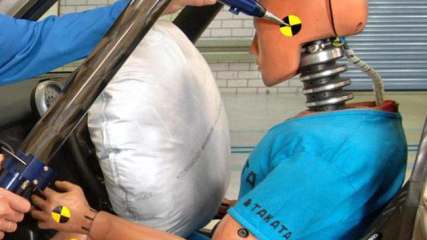Used Honda Jazz review: 2002-2012
By Ewan Kennedy · 22 Mar 2013
Jazz is the smallest Honda sold in Australia and since its launch in October 2002 it has gained an excellent reputation for build quality and trouble free running. Style is also part of the equation and the Honda designers have come up with a tall machine that has plenty of character, yet doesn’t look like everything else in its class.Honda Jazz has a high roofline to maximise interior space in what is a relatively short body. It can seat four adults with little compromising on legroom so can be used as a family car even with kids in their teenage years. In Australia the Jazz is more likely to carry either a couple or a family with young children.There’s reasonably easy entry to the back seat, but some may find the rear door opening is a little tight in the original model. Jazzes sold from the new model of 2008 provide easier access.Honda Jazz has one of the best folding rear seat designs you will find anywhere. The rear seat slides backwards and forwards to let you choose your own compromise between people and/or luggage. The seat can be folded in a few moments to create a huge luggage area.Additionally, the front passenger seat backrest can be reclined all the way down to let you carry long loads extending from the dashboard to the rear window. Build quality is of particular interest as the Honda Jazz comes from Thailand, not Japan, to keep its price down.We have visited Honda’s Thai plant and came away impressed, though hardly surprised, to note Honda's big emphasis on quality control. In August 2008 Honda introduced a new Jazz that looked the same as the first generation, but was actually a major evolution of the old.The gen-two car is larger and sits on a longer wheelbase, so has significantly more space inside, particularly in the rear area of the cabin. Boot space increased and the 60/40 split rear seats could be folded flat without having to move the front seats a few notches forward as in the original model.At the same time the body was more rigid to improve NVH (Noise, Vibration and Harshness). The post-08 Honda Jazz has the sort of refinement that normally required a car a size larger.Handling of the little Honda is good if roads are reasonably smooth, but the older models can be bounced about on Aussie backroad bumps. On surfaces that suit it, the Jazz turns in easily, is happy to change direction in corners and is generally well set up for everyday driving. Keen drivers aren’t likely to be impressed, but it’s not that sort of car.Honda Jazz comes with a 1.3- or 1.5-litre four-cylinder engine. Though the engine sizes remained in the second-generation Jazz, they were actually all new designs. Power and torque were both increased, yet fuel consumption and exhaust emissions decreased.Best of all, the second generation engines, from 2008, have their torque spread over a wide range, with particular emphasis on the lower end of the tacho dial. The gen-one Jazz has a continuously variable transmission (CVT).The 1.5 CVT comes with a sports mode offering seven preset gear ratios operated by steering wheel shifters. The 1.3-litre engine runs purely as an automatic. Honda decided to go back to a conventional torque-converter automatic transmission in the gen-two Jazz as some potential buyers didn’t like the characteristics of the CVT, particularly the way it selected relatively high engine revs to gain maximum efficiency.An interesting new hybrid powertrain was added to the options list in early 2013. The extra charge for the clean, green petrol-electric drive system isn’t as high as it has been in the past, so buyers keen on minimising climate change are showing a lot of interest in the Jazz Hybrid.While the Jazz is reasonably easy for the amateur mechanic to work on, there is some underbonnet crowding that’s inevitable on a car of this size. Keep some band aids handy – and don’t forget the workshop manual.The Honda Australia dealer network is widespread in the heavily populated areas. Spare parts prices for Hondas are more reasonable now than they have been in the past thanks to a strong push on getting costs down over the last few years.Insurance charges for the Honda Jazz generally sit in the mid-range of the field. It’s always wise to spend some time shopping around for the best deal, though there isn’t a big spread on premiums.WHAT TO LOOK FORCheck that the engine starts easily and responds quickly and positively to the throttle, even when it’s completely cold.A continuously variable transmission should be crisp in its reactions to changes in throttle position and road conditions. Because a CVT transmission sounds and feels different to conventional automatics, have an expert drive it if you are not confident it’s working correctly.Make sure the brakes stop the car without any pulling to one side and that no one wheel locks while the others are still turning.Bodywork should be undamaged and free from rust. Corrosion is not common unless the car has been poorly repaired after a smash.Look over the interior to make sure it hasn’t suffered at the hands of uncaring owners, especially bored young kids.CAR BUYING TIPSpend just as much time shopping around for the best deals on finance and insurance as you do for the car itself.













